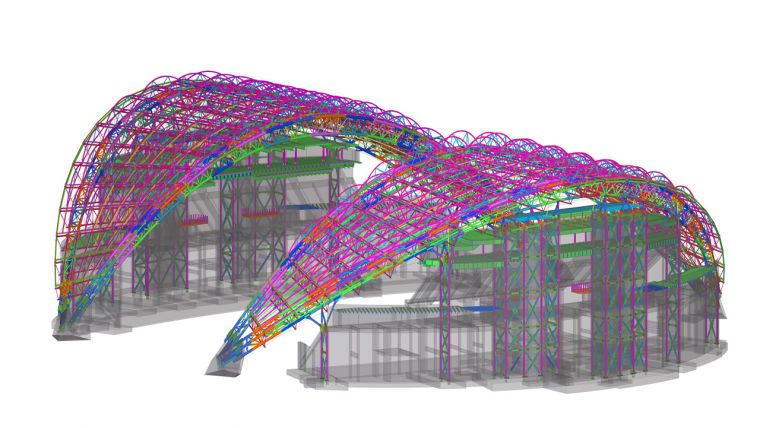The BIM Skills Shortage in the Middle East
If BIM is applied to the industry effectively, it could allow the built environment sector to accomplish the same productivity gains as the aerospace, automotive and manufacturing industries. According to the Middle East Construction and Infrastructure Survey conducted earlier this year, however, there is currently a shortage of BIM managers in the region, as cited by 40% of built environment professionals.
As digitization continues to grow in the built environment, surveying professionals need to keep up with the technological advancements to achieve maximum output for the project.
There are many reasons BIM is growing in popularity for construction projects. It is transforming the industry’s approach to projects with clients, consultants, contractors, fabricators and facilities managers working collaboratively and concurrently. It can also reduce risks, enhance scheduling and cost estimates, and improve productivity.
The benefits, however, can only be fully experienced when project managers themselves are well-versed on the ins and outs of how BIM works and how it can be used to reach the best result. As an ultimate enabler for effective integration, it is essential for project managers to understand how to harness and operate BIM correctly for their projects.
Eduardo Reus, senior consultant, technology at Turner & Townsend affirmed that the adoption of BIM in the Middle East architecture, engineering and construction (AEC) industry lags behind much of the developed world and this comes hand in hand with the vast inexperience of its professionals. “Local BIM knowledge is very little and largely drawn from foreign companies getting experience from their offices abroad”, Reus said. He added: “Findings from the 2017 Dodge Smart Market Report regarding the business value of BIM in the MENA region shows that one of the key obstacles to BIM adoption is the shortage of people with BIM skills which is forcing many MENA companies to outsource to other countries”.
Facilitating BIM uptake
Educating the regional market about BIM is essential as the availability of qualified professionals is not enough to cater to the growing need for them.
Primary factors driving the need for BIM skills include:
- Continued growth and development of the construction sector
- Regulatory agencies expanding requirements for BIM-based submissions and making them mandatory, such as Dubai Municipality making it a condition to use BIM for large construction projects
- Clients growing awareness of, and demand for, the lifecycle advantages of BIM
- Increasing adoption of BIM by international collaborators on project teams

By 2020, according to the Dodge Smart Market Report, 79% of current BIM users expect to be using it on more than 30% of their projects. In the Middle East, 80% of BIM users believe they are experiencing a positive return on investment from BIM implementation, with 25% saying they believe their RoI is 50% or higher.
Like traditional construction projects, BIM projects require trained project managers to ensure project success, and they play a crucial role in advising clients, internal and external stakeholders on the benefits of implementing and managing the major BIM processes.
Interactive training programme
To aid project managers in implementing BIM effectively and successfully deliver projects, RICS recently has launched an updated Certificate in BIM course, which now includes real-life examples and case studies of BIM application from the Middle East to make it more relevant for regional delegates.
"By attending this course, project managers will ultimately gain the required knowledge and skills to manage a BIM-enabled construction project, throughout both, the construction and operational phases", Heidi Patridge, RICS training product manager, UK, explained.
Through this interactive training programme, delegates will cover the entire BIM project by following a simulated BIM Project through its lifecycle. Eduardo Reus, who is also a trainer for this course, believes that “the most important driver for BIM adoption in the MENA region is greater client demand, rather than government mandate. This course is intended to educate clients (owners) and AEC practitioners to consider using BIM.”
While the use of BIM is growing across the Middle East region, it has not fully matured and project managers are the ones who have it in their hands to fill the gap.

Value staying current with geomatics?
Stay on the map with our expertly curated newsletters.
We provide educational insights, industry updates, and inspiring stories to help you learn, grow, and reach your full potential in your field. Don't miss out - subscribe today and ensure you're always informed, educated, and inspired.
Choose your newsletter(s)












